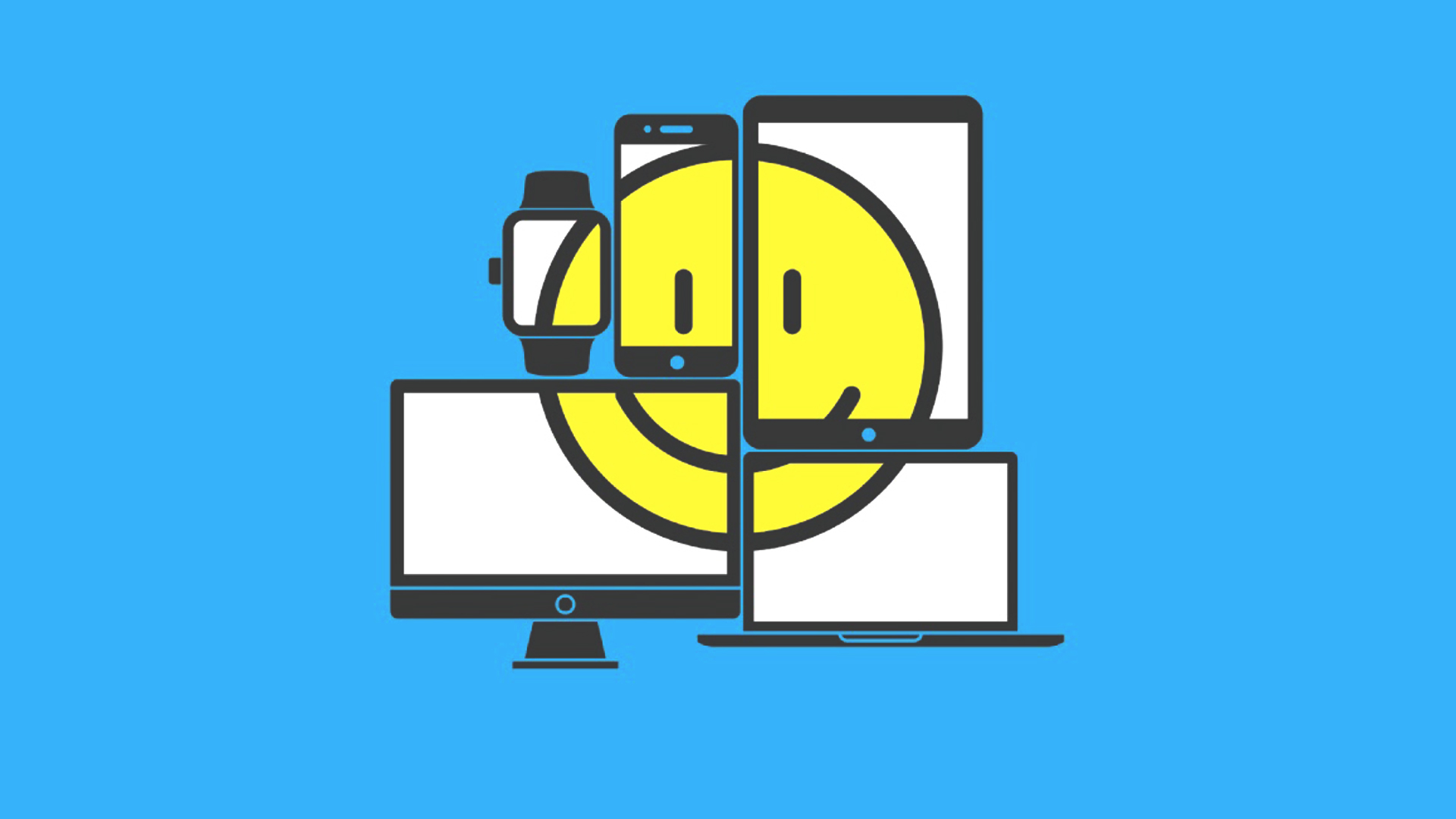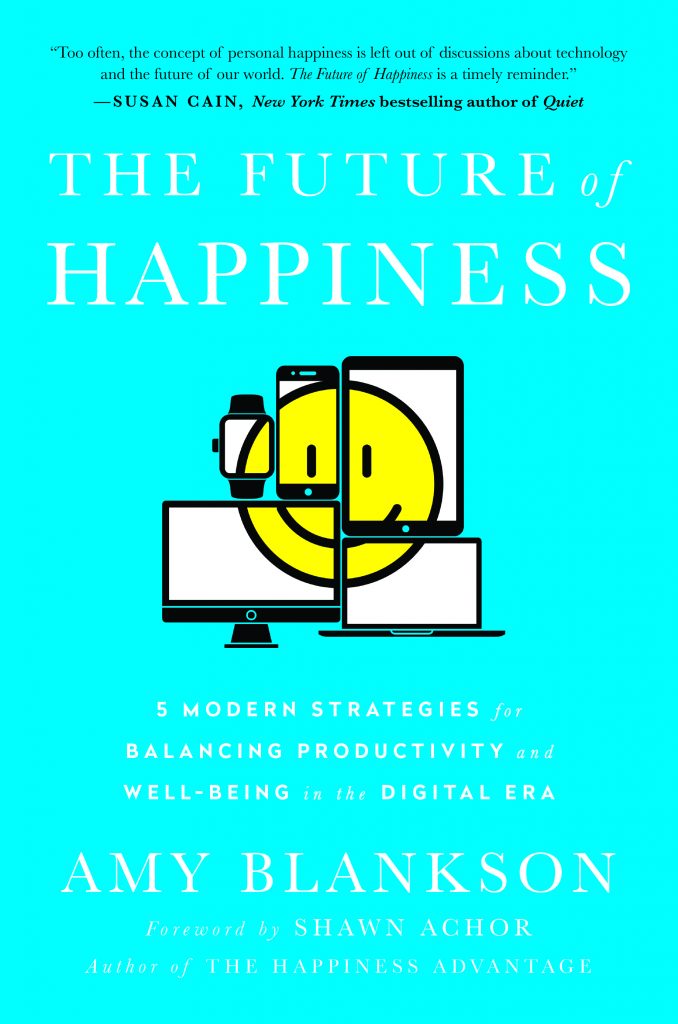
We Are Running Out of Space
By Quiet Revolution
The following excerpt is from The Future of Happiness: 5 Modern Strategies to Wire Your World for Greater Productivity and Wellbeing by Amy Blankson (BenBella Books, April 2017).
The overconsumption of digital stuff has the same effect on your brain as physical clutter. Whether it be your closet, your office desk, or your inbox, excess things in your surroundings can have a negative impact on your ability to focus and to process information. In fact, a team of UCLA researchers recently observed thirty-two Los Angeles families and found that, particularly for the mothers, stress hormones spiked during the time they spent dealing with their belongings. That’s exactly what neuroscientists at Princeton University found when they looked at people’s task performance in an organized vs. disorganized environment. The results of the study showed that clutter in your surroundings competes for your attention, resulting in decreased performance and increased stress. Even the size of our online inboxes can become a trigger for our mood. Similar to what multitasking does to your brain, clutter overloads your senses, makes you feel stressed, and impairs your ability to think creatively.
We crave structure in our lives, yet the rapid transformation of tech leaves us unsure of how to create that sense of order. We keep trying to create routines for new habits without actually prioritizing the habits in our lives. For instance, I have downloaded more exercise apps than I care to admit without actually following through on any of them. I use tech as a crutch, hoping that if I find that one app, it will create a lifetime of change. It’s sort of like wishfully thinking a crutch will make you start walking again rather than just help you stay upright.
Why does all this insight not lead to better habits? Like kids on a hot summer day, we sometimes run headlong into the spray of technology just for the fun of it. But moments later, we realize that our clothes are drenched and we have no idea what to do next. Taking a moment to contemplate our actions can save us a lot of time and trouble in the long run.
When to Fuse It and When to Lose It
Will we let tech continue to drive us at hyper-speed, filling us with guilt every time we look at the graveyard of outdated devices that we have no idea what to do with? Or will we control the stream of tech in our lives, grounding ourselves in the bigger picture and using tech intentionally to achieve our potential? We need a practical system for knowing when it’s worth it to integrate new tech into our lives and when it’s time to lose it (tech) before you lose it.
In business, we determine optimal strategies by using cost-benefit analyses. But in our personal lives, there simply isn’t time or energy to run fancy formulas about whether Candy Crush is good for our mental health and productivity. Nor would we want to. Moreover, we know from behavioral economics that humans are not always perfectly rational (OK, not even close to perfect). In fact, Princeton professor and New York Times bestselling author Daniel Kahneman explains that humans have two different systems of thinking, one that is fast, intuitive, and emotional, and the other that is slower, deliberate, and more logical. By slowing down our thought processes, we begin to become more aware of our illogical cognitive biases and can then start to make better decisions. By extension, as we embark on the journey of decluttering the digital chaos in our lives, let’s strive to slow down our thought processes about what technology we want “to fuse or lose” in our lives so that we can make space for greater happiness in the future.
THE “REALLY?!” RULE
To slow down our thought processes, we need an in-the-moment mantra to decide what to do with the tech clutter in our lives. My dirty little secret is that I’ve got a lot of clutter in my house. A few years ago, I was attempting to declutter my house before listing it for sale and I was really struggling with deciding what to get rid of. My brother happened to be at the house that day and he obnoxiously started to follow me around, saying, “Really, Amy? Do you really need that?!” He’s lucky he didn’t get strangled. Nevertheless, his question echoed in my head so often that it actually began to work.
Optimism, on the other hand, fuels a “growth mindset,” which Dweck defines as the belief that our most basic abilities can be developed through dedication and hard work. By scanning the world for the positive, we can begin to transform our past failures, hurts, and fears into a source of potential growth—a process that paves the way for long-term happiness. In fact, researcher Barbara Frederickson discovered happy people often experience an “upward spiral” when they feel happy: Happy people like to develop new skills, which leads to new successes, which results in more happiness, which causes the process to repeat itself. I want to be on that upward spiral! But of course, it is easier said than done.

Amy Blankson has become one of the world’s leading experts on the connection between positive psychology and technology. She is the only person to be named a Point of Light by two presidents (President George H. W. Bush and President Bill Clinton) for creating a movement to activate positive culture change. A sought-after speaker and consultant, Amy has worked with organizations like Google, NASA, the US Army, and the Xprize Foundation to help foster a sense of well-being in the Digital Era. Her new book, The Future of Happiness: 5 Modern Strategies to Wire Your World for Greater Productivity and Wellbeing publishes April 2017.








